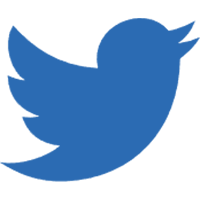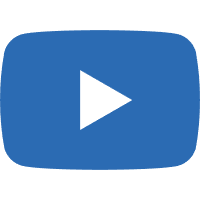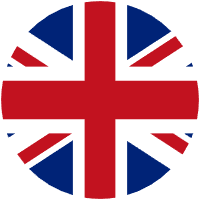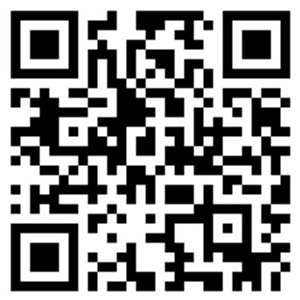News
How Protective Masks Are Helping Shape Public Health Policies: A Comprehensive Analysis
Aug 09,2025
How Protective Masks Are Helping Shape Public Health Policies
Introduction to Protective Masks and Their Significance
The emergence of protective masks in everyday life has dramatically altered the landscape of public health. Initially utilized primarily in healthcare settings, the widespread adoption of masks during health crises, particularly the COVID-19 pandemic, has led to significant shifts in policy-making and public behavior. This article delves into the multifaceted role that protective masks play in shaping public health policies and community responses to health threats.
The Historical Context of Mask Usage in Public Health
To understand the current impact of protective masks, it is essential to evaluate their historical utilization. Masks have been employed during various pandemics throughout history, including the 1918 influenza outbreak. However, the recent global health crisis has reignited discussions about their importance, leading to a reevaluation of their role in public health strategies.
The Evolution of Mask Policies Globally
Countries worldwide have adopted varying approaches to mask mandates. Early on, nations like Taiwan and South Korea implemented strict mask-wearing policies, contributing to their successful containment of the virus. In contrast, many Western countries were slower to adopt similar measures, leading to a disparity in infection rates and healthcare outcomes.
Scientific Evidence Supporting Mask Efficacy
Extensive research underscores the effectiveness of masks in reducing transmission rates of airborne diseases. Studies have shown that masks can significantly lower the viral load in public spaces, thereby protecting both the wearer and those around them. This evidence has fueled the development of public health policies that prioritize mask usage as a primary defense mechanism.
The Role of Masks in Shaping Public Health Policies
The influence of protective masks extends beyond individual safety; they have become a cornerstone of public health policy. Policymakers have increasingly recognized the necessity of incorporating mask mandates into their health strategies.
Legislation and Mask Mandates
As the pandemic unfolded, many governments enacted legislation requiring mask usage in public places. These mandates were aimed at curbing the spread of the virus and alleviating pressure on healthcare systems. The legal implications surrounding mask mandates have prompted discussions about civil liberties and public health responsibilities.
Public Compliance and Cultural Shifts
The implementation of mask mandates has also contributed to a cultural shift in how society views health responsibilities. Increased public compliance has led to a greater collective understanding of the importance of protective measures in safeguarding community health. This newfound awareness is likely to influence future health policies beyond the current pandemic.
The Economic Implications of Mask Policies
The adoption of mask mandates has also had significant economic ramifications. Businesses, particularly in the retail and hospitality sectors, have had to adapt to new health regulations, affecting their operations and customer interactions.
Impact on Small Businesses
For small businesses, compliance with mask mandates has been both a challenge and an opportunity. While the costs associated with providing masks and enforcing safety protocols can be burdensome, these measures have helped build consumer trust. Shoppers are more likely to frequent establishments that prioritize safety, leading to a potential boost in sales for compliant businesses.
The Future of Protective Masks in Public Health Strategy
As the world continues to navigate the complexities of infectious diseases, the role of protective masks is likely to evolve. Current public health policies may serve as a template for future strategies addressing not only respiratory infections but also other health threats.
Integration of Technology and Innovation
The future of mask usage in public health could be enhanced through technological advancements. Innovations such as smart masks equipped with filters and monitoring systems may emerge as vital tools in preventing disease transmission. Policymakers will need to consider these advancements when shaping future health regulations.
Long-Term Changes in Health Behavior
The pandemic has instilled a heightened awareness of personal health and hygiene practices. It is anticipated that the behavioral changes prompted by mask-wearing, such as increased hand hygiene and social distancing, will persist even post-pandemic. This shift may lead to more robust health policies focused on proactive disease prevention.
Challenges in Mask Policy Implementation
Despite the clear benefits of protective masks, several challenges hinder their effective implementation in public health policy.
Public Resistance to Mask Mandates
Resistance to mask mandates has been a significant barrier to widespread compliance. Misinformation and differing opinions regarding the efficacy of masks have fueled public debate. Addressing these concerns through effective communication and education will be crucial for the success of future health initiatives.
Equity and Accessibility Issues
Access to masks can also be an equity issue, with marginalized communities facing barriers to obtaining protective gear. Policymakers must ensure that mask distribution is equitable and accessible to all, to promote public health effectively.
FAQs About Masks and Public Health Policies
1. Why are masks considered effective in preventing disease transmission?
Masks block respiratory droplets, which are the primary transmission method for many infectious diseases, thereby reducing the overall spread.
2. What are the different types of masks available for public use?
There are several types of masks, including cloth masks, surgical masks, and N95 respirators, each offering varying levels of protection.
3. How have masks influenced behavioral changes in the public?
The necessity of wearing masks has increased public awareness about health practices, leading to better compliance with health guidelines such as hand hygiene and social distancing.
4. What role do masks play in future public health strategies?
Masks are expected to remain a key component of public health strategies, adapting to various health threats beyond respiratory infections.
5. How can policymakers improve public compliance with mask mandates?
Policymakers can enhance compliance through education, effective communication strategies, and by addressing accessibility issues related to mask distribution.
Conclusion
Protective masks have transcended their initial purpose as simple barriers against pathogens, evolving into essential components of public health policies. Their role in shaping legislation, influencing behavior, and fostering economic adjustment cannot be overstated. As we continue to learn from the current pandemic, the insights gained from the adoption of mask mandates will inform future health strategies, ensuring that public health remains a priority for communities globally. Embracing the lessons learned about the efficacy and necessity of protective measures will pave the way for a healthier and more resilient society.
Aug 09,2025
Category:
knowledge
Related Information








 English
English English
English Español
Español Português
Português اللغة العربية
اللغة العربية





